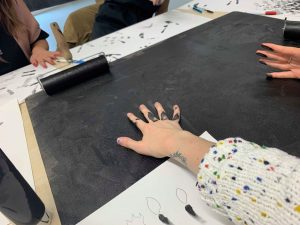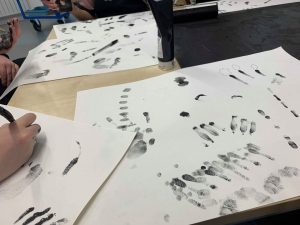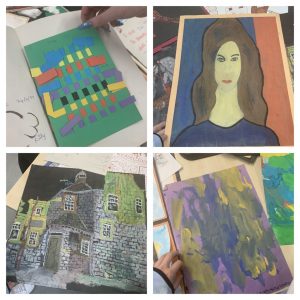Week 2 – Integrated Arts Blog
This week our lecturers and inputs focused on visual art, justifying the arts, thinking is sculpting and the further concepts of drama techniques in lessons.
Firstly, thinking is sculpting is verbalising the visual art and how finding the meaning in imagery. When teaching children, compared to adults they do not have as much life experience, therefore their vocabulary can be more limited or they may not know what to convey when looking at an image, but by exposing them to different forms of art, children will start to apply what they have learned from constant exposure to television, newspapers, magazines and books to art. This preparation only allows them to deal easily with images that follow well-known conventions or are narrative in a traditional sense, not unpredictable ones nor those in which the story is hard to figure out (Phillip Yenawine 1997).
Justifying the Arts
“It is worth recognising that different art forms and even different works frequently have different intentions and effects; they can enthral, move, enlighten, inform, inspire, amuse, challenge, entertain or provoke.” (Fleming 2012 p19)
Firstly, in our lecture we looked at visual metaphors on a page of writing called ‘visible’, we were then to draw on the sheet to interoperate what we thought the text conveyed and to highlight metaphors. The aim of this as to show visible learning and describe thoughts and feelings on the page:

This strategy is to introduce children the thought of discussion through literacy by using specific words and drawing pictures that connect to them.
In our first input, we then looked at visual art and the different perceptions children may have when creating expressive art with ink and finger painting to create shapes:


As teacher’s, we need to show interest to all children’s different perceptions and ideas when looking at something as complex as expressive arts. Children may look at a finger painting and see multiple things such as butterflies or a tree that you may not see and being able to support that is a main quality a teacher should have when making an art lesson. If you can write you can draw, creativity is one of the core things that makes us human, we as teachers sometimes just need to help children realise that and help them connect with themselves. Engaging children in the expressive arts can allow them to communicate in potentially profound ways (Eisner 2002) and as Russell Bowie (2009 p5) points out: “Because the arts can embody and communicate emotions, ideas, beliefs and values, they can convey meaning through aesthetic forms and symbols and evoke emotive responses to life with or without words.”. This is the opportunity for us as teachers to communicate with our class and support open discussion so the children’s voices are heard.
The second input then continued from week 1 and looked at 5 strategies for drama activities which can be used when looking at images. We looked at pictures and based our ideas around them for creating a story. Firstly, we looked at the famous watercolour painting ‘Windows in the West’ by the Scottish artist Avril Paton. The strategies we used to explore this photo was:

Still Image – This strategy was to show to the rest of the class what we thought the residents of the tenement would be doing in this picture.
Narration – Acting out a scenario in the painting that is then commentated by a single person who tells the story and what is going on.
Our scenario was a mum and dad who were just being told that their daughter was pregnant and the mum and dad both step out one after the other and tell the class how they are feeling whether that is positive or negative. This lesson can help children’s understanding deepen on themes such as teen pregnancy, Scottish art and the wider world. It can also help promote children who are self-conscious or shy about drama and let them be involved in it without acting by themselves. Group work also promotes creating and presenting in a team and hearing other ideas that can create a great piece of improvised or planned art.
Both inputs link as they both convey the thinking is sculpting and providing children the freedom of expression through imagery and thought provoking art. Using different conventions such as narration and still image gives an expressive art strategy to teach children the importance of art and how using these, you can learn in depth knowledge about important subjects in the world.
References
- Eisner, E. (2002). The arts and the creation of the New Haven: Yale University Press
- Fleming, M. (2012) The arts in education: an introduction to aesthetics, theory and pedagogy. London:Routledge.
- Russell-Bowie D. (2009). MMADD about the arts: An introduction to primary arts education. Frenchs Forest, NSW: Pearson Education Australia
- Yenawine, P., 2013. Visual thinking strategies: Using art to deepen learning across school disciplines. Harvard Education Press.
- Alter, F., Hays, T. and O’Hara, R., 2009. The challenges of implementing primary arts education: What our teachers say. Australasian Journal of Early Childhood, 34(4), pp.22-30.


